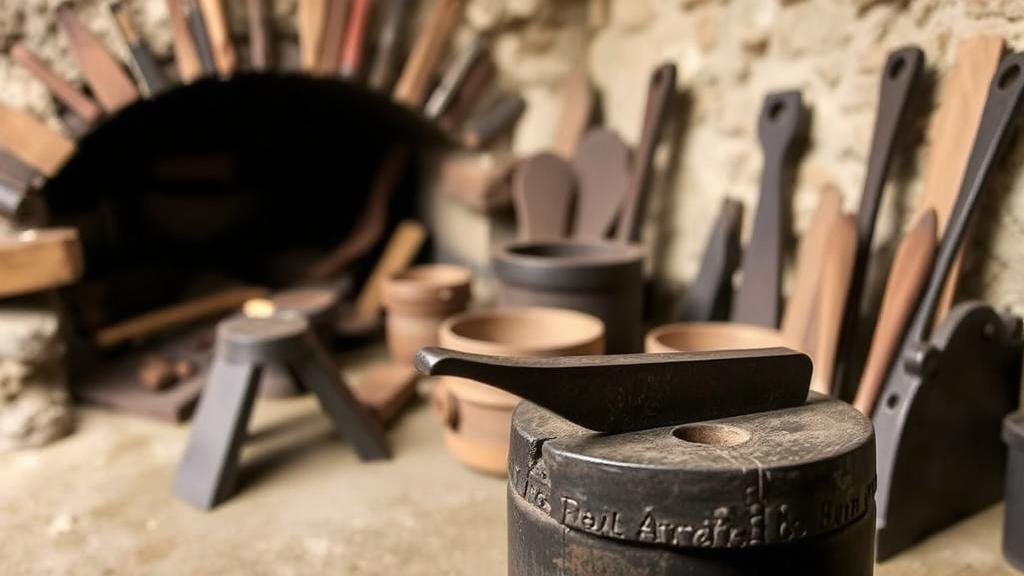Rediscovering Frontier Blacksmith Tools in Early Settlement Forge Locations
Rediscovering Frontier Blacksmith Tools in Early Settlement Forge Locations
The significance of blacksmithing in the early American frontier cannot be overstated. Blacksmiths were essential for survival, providing tools, weapons, and various iron goods crucial for daily living. This research examines the historical context and archaeological findings related to blacksmith tools in early settlement forge locations, shedding light on their craftsmanship and community impact. This comprehensive study aims to contribute to a deeper understanding of early American industry and craftsmanship.
Historical Context of Blacksmithing in America
Blacksmithing in America dates back to the arrival of European settlers in the early 17th century. The first documented blacksmith in America was John Houghton in 1629, who established a forge in Massachusetts. By the time of westward expansion in the 19th century, blacksmiths had spread across the continent, playing a vital role in not just town development but also in the establishment of trade routes.
As settlers moved westward during the Homestead Act of 1862, the demand for blacksmiths surged. Tools for farming, construction, and daily life required constant repair and replacement, and blacksmiths filled this critical need. For example, in the 1850s, it was common for a town to have at least one blacksmith shop for each hundred residents, emphasizing the trades importance in early American settlements.
Archaeological Evidence of Early Blacksmith Tools
Archaeological excavations at early settlement sites, such as those in the Virginia frontier and along the Oregon Trail, have uncovered a wealth of blacksmithing artifacts. These findings include:
- Forging hammers, often weighing between 2 and 5 pounds, indicative of the craftsmanship required.
- Anvils, essential for shaping metal, with weights ranging from 100 to 300 pounds, showcasing local metallurgys significance.
- Coal and charcoal remnants, used as fuel for extreme heat generation in forges, critical for successful ironworking.
One notable excavation site at the historic town of New Salem, Illinois, where Abraham Lincoln lived, revealed various blacksmithing tools from the 1820s. Items found included tongs, punches, and swages, which are essential for shaping metal into usable products. This suggests a thriving blacksmithing trade during the towns formative years.
Techniques and Tools: Function and Design
The tools developed and utilized by frontier blacksmiths exhibit a blend of functional design and craftsmanship, often influenced by European styles. Key tools included the following:
- The forge: Central to blacksmith operations, it provided the controlled environment necessary for heating iron.
- The hammer: A versatile tool used for shaping metal, it was often customized to fit the blacksmiths hand.
- The tongs: Essential for gripping hot metal, various designs catered to different shapes and weights of material.
The transformation of raw materials into functional items was not just a task; it represented a vital skill set that ensured the survival of the community. For example, blacksmiths often created horseshoes, which were pivotal for transportation and agriculture, indicating the interdependence between blacksmiths and the farming community.
Modern Rediscovery and Preservation Efforts
Today, the rediscovery of these frontier blacksmith tools has gained traction among historians and archaeologists. Efforts to preserve these artifacts have led to collaborations between museums, universities, and historical societies. Notable projects include:
- The Blacksmith Shop Museum at the Prairie Village in South Dakota, which features replication blacksmithing techniques to educate the public.
- The National Park Service’s efforts to preserve historical blacksmith shops along the Lewis and Clark trail, highlighting their integral role in American exploration and expansion.
Plus, workshops and courses focusing on traditional blacksmithing techniques have emerged, ensuring that new generations can appreciate and continue the craftsmanship established by early blacksmiths.
Conclusion and Implications for Future Research
The rediscovery of frontier blacksmith tools provides invaluable insight into the socio-economic conditions of early American settlements. Future research could explore the regional variations in blacksmithing techniques or analyze the role of blacksmiths in local economies. By understanding their contributions, historians can paint a more comprehensive picture of early American life and industry.
In summary, blacksmithing was not merely a craft but a cornerstone of frontier life, essential for the establishment and sustainability of communities across early America. The integration of these tools and techniques into our historical narrative emphasizes the resilience and ingenuity of early settlers.


